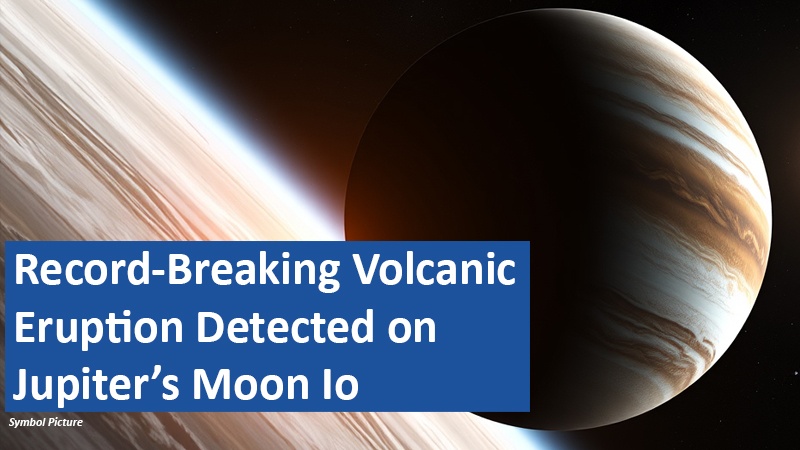
Io, Jupiter’s highly active volcanic moon, has just experienced the most powerful eruption ever recorded in the solar system. Data from NASA’s Juno spacecraft reveal an eruption spanning 100,000 square kilometers—an event of unprecedented scale. Scientists are now studying the impact of this phenomenon and its implications for planetary volcanism.
Discover the best deals on Amazon now!
Io: A Moon Under Constant Gravitational Stress
With a diameter of 3,643 kilometers, Io is comparable in size to Earth’s Moon. However, unlike our Moon, Io is trapped in an intense gravitational tug-of-war with Jupiter and its neighboring moons. This constant squeezing generates extreme internal friction, melting the moon’s interior and fueling over 400 active volcanoes—making Io the most volcanically active body in the solar system.
NASA’s Juno spacecraft, which has been studying Jupiter and its moons since 2016, recently captured what scientists are calling a record-breaking volcanic event. “Every flyby of Juno has exceeded our expectations, but the latest data left us truly stunned,” said Scott Bolton of the Southwest Research Institute. “This is the largest volcanic eruption we have ever recorded on the most active world in the solar system.”
80 Trillion Watts of Power in a Massive Eruption
On December 27, 2024, Juno’s instruments detected an eruption covering a 100,000-square-kilometer area—roughly the size of Iceland. NASA believes this massive eruption originated from a cluster of volcanic hotspots, all linked to a vast underground system of magma chambers.
The eruption released an estimated 80 trillion watts of thermal energy, six times more powerful than the total energy output of all power plants on Earth combined. Such immense energy release could explain the moon’s continuous reshaping due to volcanic activity.
A Permanent Change to Io’s Surface
Data from Juno’s infrared and visible-light cameras confirm that this eruption is not just an intensification of existing volcanic activity—it has fundamentally altered Io’s surface. Previous flybys in December 2023 and February 2024 showed no trace of this massive volcanic region, confirming that the eruption created an entirely new landscape.
NASA scientists are eager to observe how Io’s surface evolves in the coming months. The next flyby, scheduled for March 3, 2025, will provide another opportunity to study the aftermath of this extreme geological event.
What Can Io Teach Us About Volcanoes?
The study of Io’s extreme volcanism offers valuable insights into geological processes on other celestial bodies. By understanding how massive eruptions reshape Io, scientists hope to refine models of planetary volcanism—including Earth’s own volcanic activity.
This record-breaking eruption on Io demonstrates the immense power of tidal forces in shaping planetary bodies. The event has permanently altered the moon’s landscape, providing scientists with a rare opportunity to study large-scale volcanic transformations in real time. Future observations will deepen our understanding of Io and offer valuable insights into volcanic activity across the solar system.
Could Io’s volcanic processes have analogs on other moons or exoplanets? What can studying extreme planetary volcanism tell us about Earth’s own geological evolution? Share your thoughts in the comments!
Based on content from www.futurezone.at and own research.